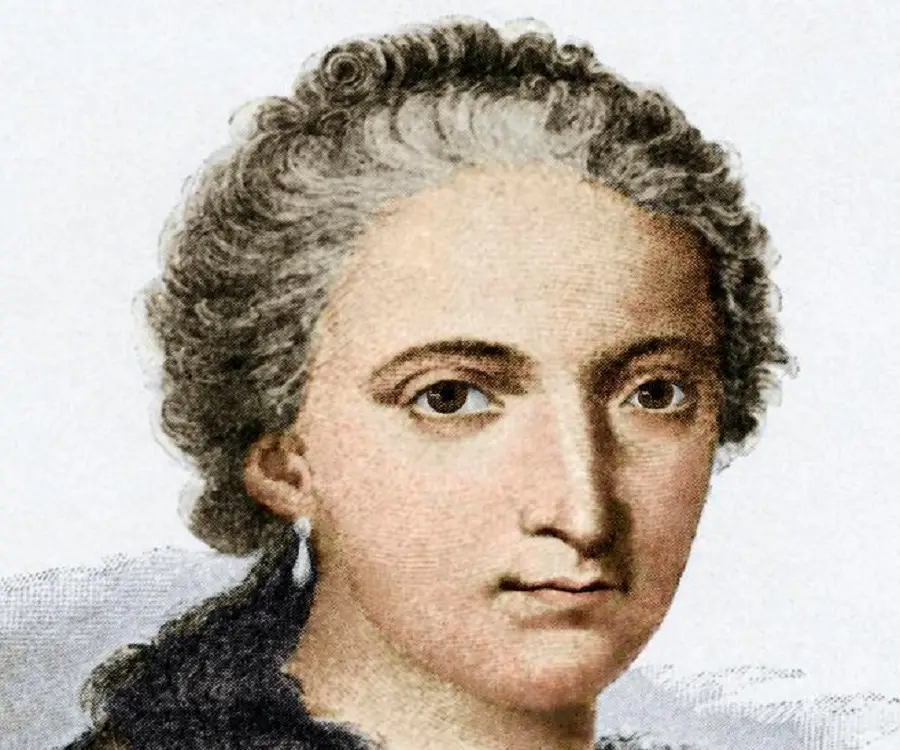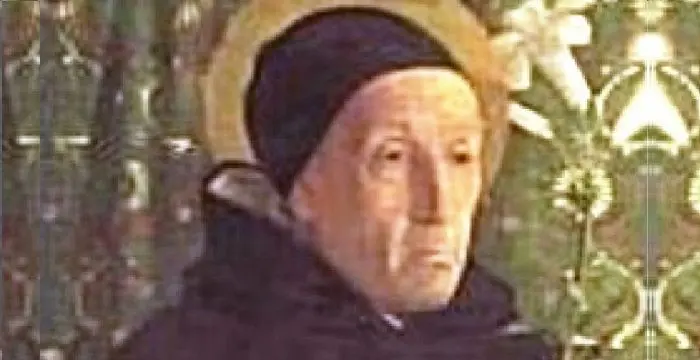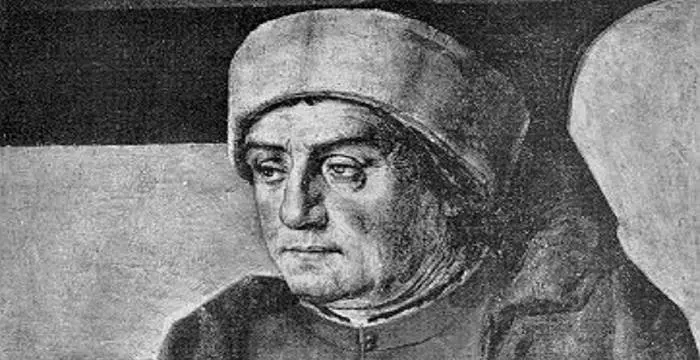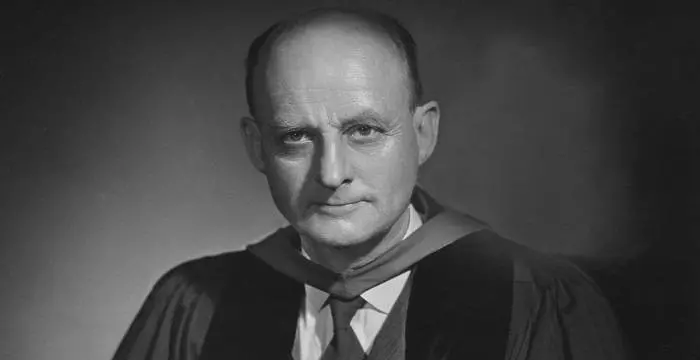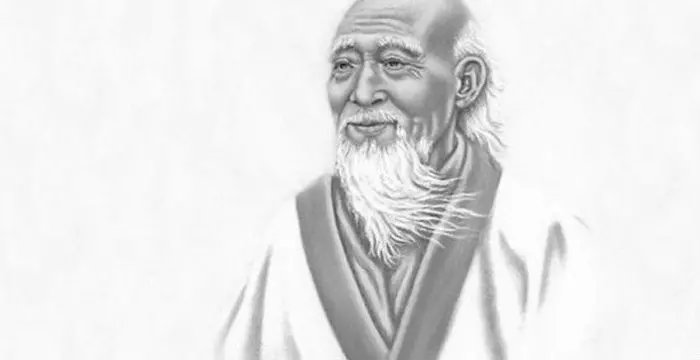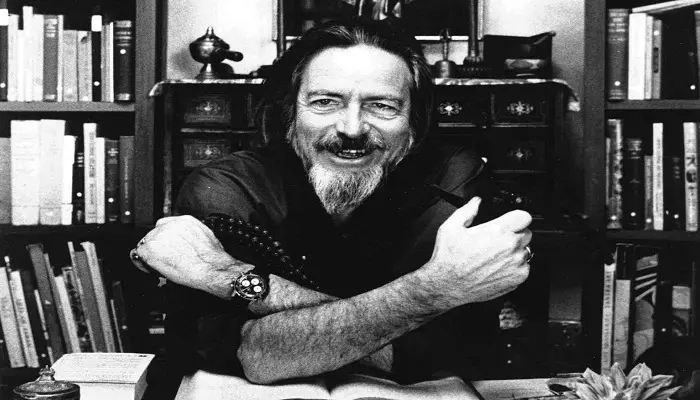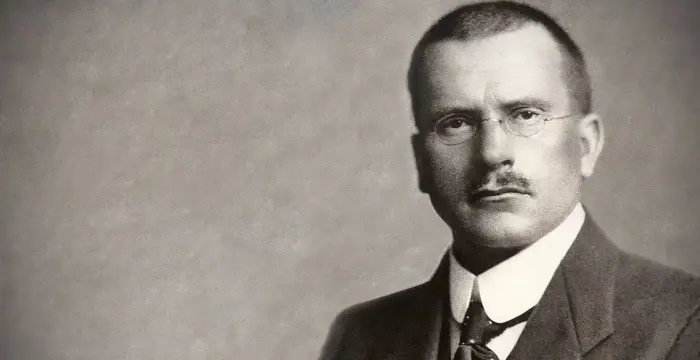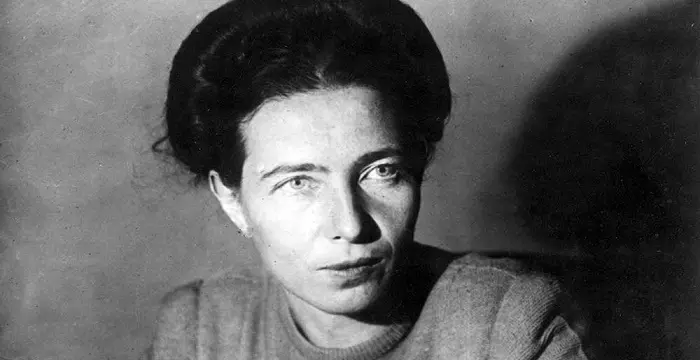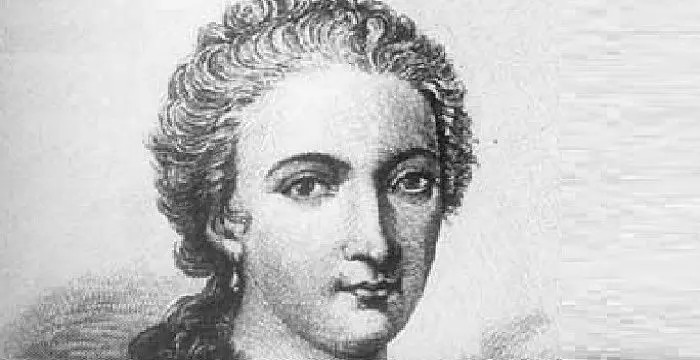
Maria Gaetana Agnesi - Theologians, Birthday and Childhood
Maria Gaetana Agnesi's Personal Details
Maria Gaetana Agnesi was an Italian mathematician, philosopher and theologian
| Information | Detail |
|---|---|
| Birthday | May 16, 1718 |
| Died on | January 9, 1799 |
| Nationality | Italian |
| Famous | Intellectuals & Academics, Philosophers, Theologians, Mathematicians |
| Siblings | Maria Teresa Agnesi Pinottini |
| Birth Place | Milan |
| Religion | Catholicism |
| Gender | Female |
| Father | Pietro Agnesi |
| Mother | Anna Fortunata Brivio |
| Sun Sign | Taurus |
| Born in | Milan |
| Famous as | Mathematician, Philosopher, Theologian |
| Died at Age | 80 |
// Famous Mathematicians
Grigori Perelman
Grigori Perelman is a Russian mathematician who is best known for his contributions to Riemannian geometry and geometric topology. Check out this biography to know about his childhood, family life, achievements and fun facts about him.
Terence Tao
Terence Tao is an Australian- American mathematician who has contributed enormously to the field of mathematics. Check out this biography to know about his childhood, family life and achievements.
Isaac Newton
Isaac Newton was an English scientist and mathematician, who discovered gravitation and Newtonian Mechanics. Read this biography to find more on his life.
Maria Gaetana Agnesi's photo
Who is Maria Gaetana Agnesi?
Maria Gaetana Agnesi was an eighteenth century Italian mathematician, philosopher and theologian. From the childhood, she was educated at home by a string of learned men of the church. By the age of eleven, she could speak fluently in seven different languages and began to be known as ‘The Seven Tongued Orator’. Even when she was a child, she was prodded by her ambitious father to speak on different topics in front of an august gathering of learned men, many of whom were internationally renowned scholars. In such gatherings she not only spoke on different topics in fluent Latin, but was also required to defend her theses. Moreover, when foreign scholars asked her complicated questions in their native tongue she always answered them in the same language. However, she disliked such obvious display of her intellect and withdrew from such activities in the pretext of her household duties once her mother died, but continued academic activities under the guidance of renowned scholars. Once her father died, she gave up even that. She then started studying theology and devoted her life entirely to the service of the poor.
// Famous Intellectuals & Academics
Bertil Gotthard Ohlin
Bertil Gotthard Ohlin was a famous Swedish economist. This biography profiles his childhood, family life & achievements.
Emily Greene Balch
Emily Greene Balch was an American economist, sociologist and pacifist who won the 1946 Nobel Peace Prize. This biography of Emily Greene Balch provides detailed information about her childhood, life, achievements, works & timeline.
Martin Buber
One of the greatest philosophers to have ever walked on earth, Martin Buber contributions to philosophy is a long-standing one. Explore all about his profile, childhood, life and timeline here.
Childhood & Early Life
Maria Gaetana Agnesi was born on May 16, 1718, in the city of Milan, then under the crown of Habsburg. Her father Pietro Agnesi was a professor of mathematics at the University of Bologna. At the same time, he made immense wealth by trading in silk.
Maria’s mother, Anna Fortuna Brivio, was a scion of famous Brivio family of Milan. Maria Gaetana was their eldest child. The famed Italian composer, Maria Teresa Agnesi Pinottini, was her younger sister.
Pietro Agnesi was an ambitious and overbearing man. He had married Anna simply to climb up the social ladder. After her death he took two more wives. In all, he had twenty one children. Maria Gaetana had to spend a lot of time looking after her siblings.
Maria Gaetana was born genius. By the age of five, she could speak Italian and French fluently. Pietro Agnesi recognized her talent and employed the best tutors to teach her at home. All of them were learned men of the Church. Maria began her education under their tutelage.
Pietro Agnesi regularly hosted gatherings where men of learning were invited. His main purpose to host such gatherings was to show off his daughter’s talents. While Maria Gaetana had to engage in intellectual discourse her sister was asked to display her musical talent.
When Maria was just nine years old she delivered an hour long self-composed speech in front of eminent guests in Latin. It was on women’s right to higher education. However, some historians are of the opinion that the piece was actually written by one of her tutors and she just delivered it. Even if that is true, it clearly proves that by nine she had mastered Latin. Indeed, for a child as young as that delivering an hour long speech in Latin is no mean feat.
By the age of eleven, Maria had mastered four other languages: Hebrew, Greek, Spanish and German. When she was twelve years old she became ill from excessive studying. Doctors prescribed that she must do everything in moderation. When Maria was fourteen, she began to study analytical geometry and ballistics.
When Maria turned fifteen, Pietro Agnesi began to host the gatherings more regularly. In these gatherings, Maria spoke on a wide range of subjects starting from logic and ontology to hydromechanics and universal gravitation. However, philosophy was one of her favorite subjects and she spoke in great length on it.
At these gatherings, she was asked complex questions on these theses and had to defend them in front of the most learned men of that time. Later in 1738, her father collected 191 discussions on natural philosophy and history and published them as a book, titled ‘Propositiones philosophicae’.
Middle Years
Maria was actually a very shy and private person. Some time now, she decided to join the church. However, her father was horrified that his most talented child wanted to become a nun and begged her to reconsider her decision. Besides, she had her siblings to look after and so she agreed to stay at home.
However, from that time onwards she began to dress humbly and stopped taking part in profane amusements such as balls and theatres. Instead, she attended the church more regularly and devoted herself to the study of Mathematics.
In 1739, Maria came across ‘Traité analitique des sections coniques’ of the Marquis Guillaume de l'Hôpital and became interested in mathematics. From 1740, she began to be guided by Father Ramiro Rampinelli, who later became professor of mathematics at the University of Pavia. With him, she studied differential as well as integral calculus.
In 1748, on the advice of Rampinelli, she published ‘Instituzioni analitiche ad uso della gioventù italiana’ (‘Analytical Institutions for the Use of Italian Youth’), in two big volumes. It was a text book on mathematics and some believe it was aimed educating her younger siblings.
Maria Gaetana dedicated the books to Empress Maria Theresa of Austria, who honored her with a personal letter, a diamond ring and a case studded with diamonds and crystals.
Pope Benedict XIV was equally impressed with Maria’s work and in 1750, he appointed her as an honorary Professor of Mathematics in the University of Bologna. However, she did not join the university, but remained at home. Incidentally, she was the second woman to be appointed as a professor at the university.
Apart from this, Maria Agnesi also wrote a commentary on the ‘Traité analytique des sections coniques du marquis de l'Hôpital’. Although it was highly appreciated by many learned people of that time, it was never published. She had by that time turned to theology.
Later Years
Pietro Agnesi died in 1752 and with that Maria Agnesi became free to study her favorite subject theology. At the same time, she devoted herself to the cause of poor, homeless and sick. She spent all her money in charity and at times had to resort to begging to continue with her work.
In 1762, Agnesi was asked by the University of Turin to give her opinion on the recent articles on the calculus of variations by young Lagrange; she refused. She wrote back saying she was no more interested in such matters.
In 1783, she founded a home for old people and became its director. Here she lived as a nun, taking care of the inmates.
Major Works
’Instituzioni analitiche ad uso della gioventù italiana’, published in 1748 was her best work. It provides a systematic as well as most comprehensive treatment of algebra. Relatively new developments such as as integral and differential calculus were also been included in it. In the first volume she dealt with analysis of finite quantities while the second volume dealt with analysis of infinitesimals.
Personal Life & Legacy
Maria Gaetana Agnesi did not marry. She died on January 9, 1799, at the age of 80, in Milan.
The geometrical curve, ’Witch of Agnesi’, has been named after Maria Gaetana Agnesi. Originally, the Latin name of the curve was ‘versoria’. However, in Italian it became ‘versiera’, which also means devil. Agnesi had talked about the curve in length in her book ‘Instituzioni analitiche ad uso della gioventù italiana’. When the work was translated into English the curve began to be known as ‘Witch of Agnesi’.
A crater on planet Venus has been named after Maria Agnesi by the International Astronomical Union's Working Group on Planetary System Nomenclature, in 1991.
16765 Agnesi is an asteroid, discovered on October 16, 1996 at Prescott by P. G. Comba. It has also been named after Maria Gaetana Agnesi
// Famous Theologians
Meister Eckhart
Explore this biography to know the profile, childhood, life and timeline of Meister Eckhart, who brought in a great change in Germany with his groundbreaking thesis and ideas.
Anicius Manlius Severinus Boethius
Boethius was an early 6th century Roman senator and philosopher best known for his treatise ‘Consolation of Philosophy’. This biography of Boethius provides detailed information about his childhood, life, achievements, works & timeline.
Reinhold Niebuhr
Reinhold Niebuhr was a German-American theologian, intellectual and political commentator who wrote the famous book, ‘Moral Man and Immoral Society’. This biography provides information about his profile, childhood, life and timeline.
Maria Gaetana Agnesi biography timelines
- // 167616765 Agnesi is an asteroid, discovered on October 16, 1996 at Prescott by P. G. Comba. It has also been named after Maria Gaetana Agnesi
- // 16th May 1718Maria Gaetana Agnesi was born on May 16, 1718, in the city of Milan, then under the crown of Habsburg. Her father Pietro Agnesi was a professor of mathematics at the University of Bologna. At the same time, he made immense wealth by trading in silk.
- // 1738At these gatherings, she was asked complex questions on these theses and had to defend them in front of the most learned men of that time. Later in 1738, her father collected 191 discussions on natural philosophy and history and published them as a book, titled ‘Propositiones philosophicae’.
- // 1739 To 1740In 1739, Maria came across ‘Traité analitique des sections coniques’ of the Marquis Guillaume de l'Hôpital and became interested in mathematics. From 1740, she began to be guided by Father Ramiro Rampinelli, who later became professor of mathematics at the University of Pavia. With him, she studied differential as well as integral calculus.
- // 1748In 1748, on the advice of Rampinelli, she published ‘Instituzioni analitiche ad uso della gioventù italiana’ (‘Analytical Institutions for the Use of Italian Youth’), in two big volumes. It was a text book on mathematics and some believe it was aimed educating her younger siblings.
- // 1748’Instituzioni analitiche ad uso della gioventù italiana’, published in 1748 was her best work. It provides a systematic as well as most comprehensive treatment of algebra. Relatively new developments such as as integral and differential calculus were also been included in it. In the first volume she dealt with analysis of finite quantities while the second volume dealt with analysis of infinitesimals.
- // 1750Pope Benedict XIV was equally impressed with Maria’s work and in 1750, he appointed her as an honorary Professor of Mathematics in the University of Bologna. However, she did not join the university, but remained at home. Incidentally, she was the second woman to be appointed as a professor at the university.
- // 1752Pietro Agnesi died in 1752 and with that Maria Agnesi became free to study her favorite subject theology. At the same time, she devoted herself to the cause of poor, homeless and sick. She spent all her money in charity and at times had to resort to begging to continue with her work.
- // 1762In 1762, Agnesi was asked by the University of Turin to give her opinion on the recent articles on the calculus of variations by young Lagrange; she refused. She wrote back saying she was no more interested in such matters.
- // 1783In 1783, she founded a home for old people and became its director. Here she lived as a nun, taking care of the inmates.
- // 9th Jan 1799Maria Gaetana Agnesi did not marry. She died on January 9, 1799, at the age of 80, in Milan.
// Famous Philosophers
Martin Buber
One of the greatest philosophers to have ever walked on earth, Martin Buber contributions to philosophy is a long-standing one. Explore all about his profile, childhood, life and timeline here.
Lao Tzu (Laozi)
Lao Tzu was a legendary Chinese philosopher who wrote the important “Daodejing”. This biography profiles his childhood, life, career, achievements and timeline.
Alan Watts
Alan Watts was a famous British philosopher known for his Zen teachings and interpretations of Eastern philosophy. Read more about this great philosopher in the following article.
Carl Jung
Carl Jung was a Swiss psychiatrist famous for founding the school of analytical psychology. This biography of Carl Jung provides detailed information about his childhood, life, achievements, works & timeline.
Simone de Beauvoir
Simone de Beauvoir was an eminent French writer, intellectual, activist, and philosopher. This biography profiles her childhood, life, thoughts, achievements and timeline.
Jabir Ibn Hayyan
Jabir Ibn Hayyan was a medieval era polymath. Check out this biography to know about his life, works and achievements.
Maria Gaetana Agnesi's FAQ
What is Maria Gaetana Agnesi birthday?
Maria Gaetana Agnesi was born at 1718-05-16
When was Maria Gaetana Agnesi died?
Maria Gaetana Agnesi was died at 1799-01-09
Where was Maria Gaetana Agnesi died?
Maria Gaetana Agnesi was died in Milan
Which age was Maria Gaetana Agnesi died?
Maria Gaetana Agnesi was died at age 80
Where is Maria Gaetana Agnesi's birth place?
Maria Gaetana Agnesi was born in Milan
What is Maria Gaetana Agnesi nationalities?
Maria Gaetana Agnesi's nationalities is Italian
Who is Maria Gaetana Agnesi siblings?
Maria Gaetana Agnesi's siblings is Maria Teresa Agnesi Pinottini
What is Maria Gaetana Agnesi's religion?
Maria Gaetana Agnesi's religion is Catholicism
Who is Maria Gaetana Agnesi's father?
Maria Gaetana Agnesi's father is Pietro Agnesi
Who is Maria Gaetana Agnesi's mother?
Maria Gaetana Agnesi's mother is Anna Fortunata Brivio
What is Maria Gaetana Agnesi's sun sign?
Maria Gaetana Agnesi is Taurus
How famous is Maria Gaetana Agnesi?
Maria Gaetana Agnesi is famouse as Mathematician, Philosopher, Theologian



